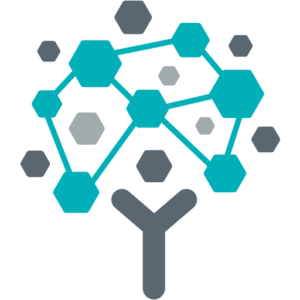Community Action Agencies
How Community Action Agencies Can Tackle Operational and Financial Challenges

Reading Time: 4 minutes
With increased needs in a political environment where federal and state budgets are cutting funding, and more organizations are fighting for the same pool of funds than ever before, how are community action agencies tackling operational and financial challenges?
Top-performing agencies are efficiently directing resources to serve the highest-need communities through evidence-based practices and by relying on sound financial and board governance.
Agency board members are public fiduciaries and act to ensure beneficiaries are at the center of every decision to ensure the community action communities served uphold its mission and serve the public in every decision.
To demonstrate that a community action agency is high performing and fiscally sustainable, community action teams may tackle these three common operational and financial challenges:
Challenge #1: Ensure sound governance and fiscal stability
In a competitive environment for funding, how can one ensure the agency is best directing resources? In collaboration, community action board members, leadership, and finance and accounting team members must practice sound fiscal responsibility by taking an active look at agency finances. This involves reviewing finance reports on a regular basis and looking at the right metrics to ensure the proper allocation of resources, and to evaluate whether an agency is working efficiently and effectively to achieve its mission.
An agency must also have systems in place to provide proper oversight and to ensure fiscal and program sustainability. The right accounting system can give visibility into cost allocation plans through robust reporting, fraud detection, and internal controls. If your accounting system does not offer internal controls, consider accounting software that has built-in audit functionality that captures and logs every transaction. You should be able to easily report these metrics and make them accessible to external auditors.
Regarding governance, every decision made affects both financial and programmatic sustainability. Each impacts mission and money. To ensure long-term sustainability, analyze programs and the resources needed to maximize each program. Actively budget and follow your budget–technology is a tool that can help facilitate fluid conversations around budget creation and management.
Having accounting software that provides the right reporting to draw financial insights from, the ability to create several budget versions and track an unlimited number of segments is crucial. How you use this data to show impact and make funding decisions will influence your community’s willingness to support you today and in the future.
Challenge #2: Maximizing programmatic resources
When evaluating programs, consider whether all the elements of a program are accounted for: from volunteers to physical assets, to the grants that fund the program, in addition to tracking payroll and volunteer hours.
Ensuring there is visibility into all the aspects of a program is crucial to meet Results-Oriented Management and Accountability (ROMA) standards reporting guidelines, maintain funding, and demonstrate impact. Consider adopting an accounting system to help make data collection and analysis easier which will inform reporting throughout your ROMA cycle.
Concerning volunteers: while volunteer hours are not tax deductible, associated costs like travel expenses, gas, mileage, and uniforms may be.
Even if volunteer hours are nondeductible, tracking volunteer hours and contributions can still be an essential demonstration of community involvement and mission delivery. Volunteer hours are also an important metric for grants offering in-kind matching for employment. Crucially, you must provide itemized documentation to receive the deductions.
Consider adopting software to manage physical assets and properly account for them in your agency’s financials. Physical assets depreciate over time, and tracking their value is crucial.
Finally, having an accurate view of grants follows individual grants throughout the entire lifestyle. Your tracking responsibilities include:
- Detailed documentation of spending
- Any changes to your planned spending
- Outcomes of your grant-funded programs
Accounting software can help community action organizations streamline operations and ensure programmatic resources are maximized. When it comes to informed decision-making, how an organization maximizes resources and tells its financial story is crucial to continue receiving funding and showing impact. Telling that story begins with robust reporting.
Challenge #3: Properly reporting
At its core, reporting is essential to illustrating impact. Reports show fiscal stability and how programs are managed towards accomplishing your mission.
When it comes to highlighting impact, consider having a system in place to report on:
- Donations: small-dollar donations, cash donations, physical assets with depreciation
- Different types of grants
- Donor advised funds
- Foundations and corporate philanthropy
- Programs and services revenue
Plus, agencies need to consider their Community Services Block Grant (CSBG) in reporting and how reports are tied to Results-Oriented Management and Accountability (ROMA) standards. The CSBG Act defines ROMA as “a sound management practice that incorporates the use of outcomes or results into the administration, management, and operation of community action agencies.”
The National Association for State Community Services Programs developed guidelines on how to report and share impact and results, how to organize your agency’s technology, and what data needs to be in place for reporting.
The CSBG Act also requires boards to be engaged in developing, planning, implementing, and evaluating CSBG activities. Boards carry out this responsibility through board action and oversight. It’s the agency’s role to ensure the board is properly informed throughout the process.
How you’re meeting ROMA and even program outcomes can be highlighted and supported with effective reporting Beyond financial management and governance, consider how your agency is navigating and reporting on these other business areas:
- Financial management
- Governance
- Program performance
- Human resources
- Leadership
- Board and management
Overcoming these challenges is no small feat, but earning the public’s trust, accurately demonstrating your organization’s impact to the community, and continuing to stay in compliance and receive federal grant funding are essential. Act on creating a sound financial structure for your agency today and meet the needs of our community well into the future.
Share this post




